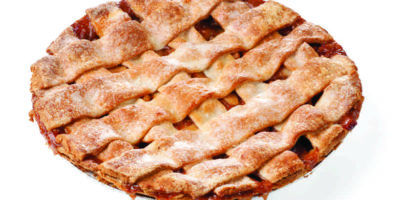Healthy, Simple & Stylish
Perhaps she is the answer to Julia Child. Where Julia dictated that each step of her marvelously complicated recipes must be followed to a T, or to a peeled pearl onion, Helen Nash, the accomplished home cook whose books are credited with bringing variety and panache to kosher cooking, says, “I really, really, really respect women. The home is not feudal. Restaurants are feudal.” And what she means is that, like many things in Jewish practice, in fact, there are several possible means to an end. Helen Nash herself would use a blender to create the perfect texture in her deliciously seasoned soup. But she gets it that a time-pressed cook striving for the same effect is likelier to use a wand to puree the vegetables rather than to shlep out the blender.
While there is nothing dictatorial about Helen Nash’s approach to food, there are certainly principles underlying what she cooks. Her new book, Helen Nash’s New Kosher Cuisine: Healthy, Simple & Stylish (Overlook Press), has recipes that are both elegant and innovative. And she understands the process of feeding self and family. Helen Nash and her family suffered terrible losses and deprivation during the Holocaust, so her beautiful table settings, artfully and mindfully prepared meals, and enduring Shabbat traditions can be seen as a defiance of what the world might have expected of her after the war.
Preparing home-cooked meals for her ailing husband in the five years before his death in 2008, she made sure that kosher laws were observed strictly. But she also overturned many kosher cooking stereotypes. This book features low-fat recipes using a cornucopia of vegetables, not overcooked green beans, boiled potatoes and the giant slabs of shoe-leather beef of Ashkenazi meal mythology. Over slivered mango, ginger tea and irresistible rugelach in her Manhattan apartment, Nash spoke about the new cookbook, her third. “I’m selling a way of life every day. For example, small portions. I would say four ounces of protein, for myself, but I know that most cooks will do at least six. And the quality of ingredients is important for flavor when you are not using fat.”
Quality doesn’t always come simply. Nash sometimes calls Chicago for the proper ground poppyseeds. And though she lives on the Upper East Side, she walks across Central Park to the West Side to buy her produce at Fairway market, where, if she isn’t sure about the spaghetti squash, she’ll buy two, hedging her bets.
When she was first refining her own cooking, being a foodie was not as democratic as it is today, and dedicated food fans had to find teachers and mentors. Married and a mother, and living in New York, she took cooking classes from renowned chefs Lydie Marshall and Michael Field. Some of her teachers even invited her to bring in her own kosher utensils and cooking pots to class so that she could taste what she was preparing.
Like Julia, Helen Nash has been a role model for younger women. Today’s star chefs also appreciate her. Jean-Georges Vongerichten, a high priest of New York restaurant cuisine, calls Nash’s recipes “Exciting, sophisticated and modern.”


